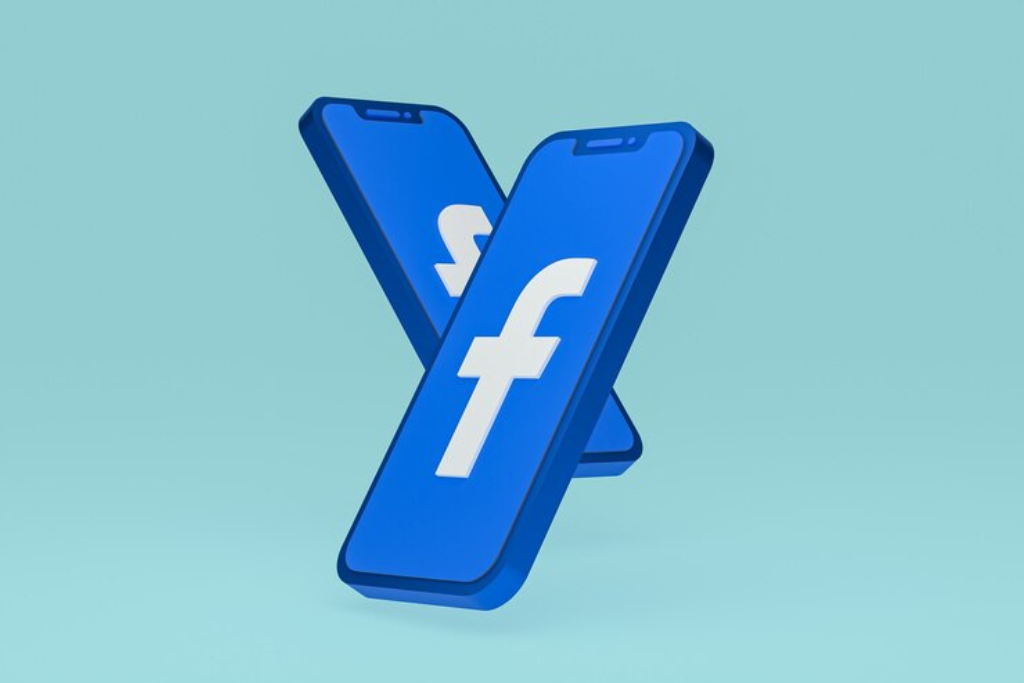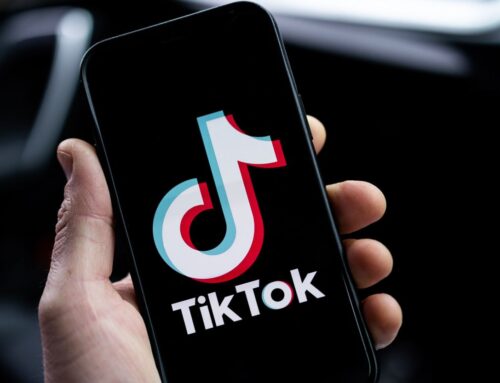Driving Results: TikTok Ads vs Facebook Ads Revealed

In the ever-evolving landscape of social media advertising, brands are continuously exploring new avenues to connect with their target audiences. Facebook marketing has long dominated the field, setting the standard for digital advertising. However, the emergence of TikTok presents a compelling challenge with its rapidly expanding user base and innovative ad formats.
This blog endeavors to offer a comprehensive guide for brands, delving into the comparison of TikTok ads vs Facebook ads, particularly focusing on photo ads. By examining Facebook advertising strategies, ad targeting options, and creative best practices, brands can navigate this dynamic environment with confidence, harnessing the full potential of both platforms to engage their audiences effectively.
Firstly, let’s delve into the intricacies of both platforms, exploring their user bases and distinctive features. Facebook’s evolution into a multifaceted social media giant contrasts with TikTok’s niche focus on short-form videos and creative filters.

Understanding these platforms is pivotal for brands seeking to diversify their paid media strategies and connect with fresh audiences. Throughout our exploration, we’ll emphasize essential Facebook ad creative best practices, strategies for Facebook ad campaign optimization, and effective approaches to Facebook ad budget management.
Moving forward, let’s delve into the array of ad formats available on both platforms. Facebook boasts a diverse range of ad formats, offering brands the flexibility to craft compelling marketing messages. Conversely, TikTok’s emphasis on captivating video ads presents a unique avenue for brands to enhance their brand visibility.
Throughout our exploration, we’ll provide valuable TikTok advertising tips and insights into Facebook ad performance metrics, aiding brands in optimizing TikTok ad targeting to maximize ROI while leveraging the potential of LinkedIn Marketing.
We will also explore the distinct audience dynamics and tailor content strategies accordingly for TikTok’s youthful appeal and Facebook’s expansive user base. Understanding the nuanced variations between TikTok and Facebook ads, including TikTok ad targeting and Facebook ad optimization, is key to achieving success in paid media campaigns.
Finally, we’ll discuss the financial considerations of advertising on both platforms, providing insights into measuring ROI and campaign efficacy. Through compelling case studies and comparative analyses of TikTok ad creative and Facebook ad formats, brands will gain actionable insights to refine their advertising strategies.
Whether your brand thrives on TikTok’s vibrant platform or finds its stride on Facebook’s established landscape, this guide will empower you to make informed decisions and leverage these platforms effectively for your advertising objectives.
Understanding the Platforms
In today’s digital landscape, understanding the platforms you’re advertising on is crucial. This section will delve into the details of two big players in social media: TikTok and Facebook. We’ll explore the unique characteristics of each platform, from their origins to their current status in the digital advertising realm.
We’ll start with an overview of TikTok, a platform that has taken the world by storm with its short, engaging video content. Next, we’ll shift our focus to Facebook, a seasoned veteran in the social media space, known for its wide reach and advanced targeting options.
A critical part of this exploration is the user base comparison. Knowing who uses these platforms and how they interact with them can provide valuable insights for your ads.
Remember, the choice between TikTok and Facebook isn’t a binary one. Many successful brands leverage the strengths of both platforms to maximize their reach and engagement. So, let’s dive in and unravel the mysteries of these two social media giants.
Overview of TikTok
TikTok, a social media platform that’s taken the world by storm, is a hub for short, engaging video content. It’s a place where creativity thrives, with users sharing everything from dance routines to cooking tutorials. The platform’s unique selling point is its ability to make any video go viral, regardless of when it’s posted. This is a feature that even Facebook hasn’t mastered yet.

TikTok’s ad platform is relatively new, offering a limited range of formats such as In-feed ads, TopView, and Branded Effects. Despite this, the platform’s ad types are unique and engaging, often blending seamlessly with user-generated content. This makes it harder for users to recognize they’re viewing an ad, keeping them engaged and scrolling.
One of TikTok’s standout features is its Carousel Ads. This format allows advertisers to share up to 10 photos with unique captions in a single ad, providing a blank canvas for creativity. However, the platform’s newness means there’s a lack of guides and information available online, and its analytics aren’t as powerful as Facebook’s.
Overview of Facebook
Facebook, a social media giant, has been a dominant player in the digital advertising space for over a decade. Its advertising platform, Facebook Ads, allows businesses to connect with their audience, spread brand messages, and gather valuable insights into user activity. The ads are image-based, with captions, and can be served across various placements on the platform, including Facebook Stories, Messenger, and the home feed.
The platform offers a wide range of ad formats, each designed to achieve specific campaign objectives. For instance, Single Image and Video ads are ideal for top-funnel activity, while Collection and Advantage+ ads are designed to generate clicks and conversions.
One of Facebook’s key strengths is its advanced targeting capabilities. The platform harvests a vast amount of data from its users, enabling advertisers to leverage detailed targeting tactics for exceptional results. Furthermore, Facebook’s ad campaigns can be easily extended onto Instagram, providing additional reach and access to new audiences.
User Base Comparison
TikTok and Facebook have different user bases. Each platform caters to a distinct demographic. TikTok ads vs Facebook ads highlight this divergence in audience characteristics. TikTok is celebrated for its viral dances and catchy soundbites. It is popular with the young. A substantial 68.5% of its users are under 34, predominantly falling between 18 and 24 years old. This renders it an ideal platform for brands aiming to engage with Gen Z and younger millennials.
In contrast, Facebook’s user base boasts greater age diversity. While it also commands a significant user share in the 18 to 34 age bracket, a higher percentage of users over 34, constituting 54% of its total user base, underscores its versatility. This broad demographic spectrum on Facebook presents a prime opportunity for brands targeting a wider age range.
However, user age isn’t the sole determinant. The sheer volume of users on each platform also plays a pivotal role. With nearly 3 billion monthly active users, Facebook, being the elder of the two platforms, offers brands an expansive audience base. In contrast, TikTok is younger. But, it has 1.2 billion monthly users. This shows its remarkable growth and popularity, especially among younger people.

In conclusion, TikTok and Facebook both offer promise for brands. Each has its unique strengths. TikTok Advertising is known for its speed and appeal to younger audiences. But, Facebook’s broader user base offers versatility. Brands, including small business owners, digital marketers, and social media managers, and e-commerce brands looking to expand, must use these platforms wisely. They must consider factors such as ROI, Ad targeting, Retargeting, and TikTok marketing. These factors help them reach their desired audience segments.
Target Audience on TikTok
TikTok, the social media sensation, has a unique audience profile that’s worth exploring. The platform attracts the young. A large chunk of its users are 18-24. This group makes up 41.7% of TikTok’s users. It’s a goldmine for brands aiming to reach younger consumers.
But TikTok has hooked not just the teens and early adults. The 25-34 age group also has a strong presence on the platform, accounting for 31% of users. This means if you want to target millennials, TikTok is a platform you can’t ignore.
Interestingly, TikTok isn’t just a platform for the young and the restless. It also has a sizeable user base aged over 35, making up 24.1% of its audience. This might seem small compared to the younger demographics. However, we cannot overlook this substantial number.
The gender split on TikTok also offers interesting insights. The platform has more female users. This makes it ideal for brands targeting a female audience.
Lastly, the geographical distribution of TikTok users is worth noting. The US is TikTok’s biggest market. It is a prime platform for brands targeting the US.
Target Audience on Facebook
One must reckon with the force of Facebook’s targeting capabilities. With its advanced advertising algorithm, it can pinpoint the exact market you’re aiming for with just a click. This is a boon for e-commerce stores, as it allows for precise ad strategies. Facebook’s algorithm is always changing. It offers detailed optimization based on age, gender, location, and interests.
The platform’s large user base, boasting nearly 3 billion monthly active users, provides an extensive pool of potential customers. This is a significant advantage over other social media platforms, including TikTok. Facebook’s parent company, Meta, also owns Instagram, which further expands your advertising reach to another 2 billion users.

Facebook’s built-in A/B testing is another feature that sets it apart. This tool lets you test different ad versions and get live results. It helps you see what works best for your target audience.
Also, Facebook has exceptional tracking and analytics tools. They give valuable insights into your ad performance. These tools, backed by decades of experience, are some of the most powerful available in the market.
But, recent security upgrades on mobile devices have made this somewhat harder for Facebook. Despite this, Facebook’s extensive historical data gives it an edge over newer platforms like TikTok.
Content Strategies for Each Platform
Creating for TikTok and Facebook requires understanding each platform’s unique features and audience preferences. On TikTok, the content is primarily video-based, with a strong emphasis on creativity, humor, and trending challenges. Brands need to tap into these trends and create engaging, fun content that resonates with the TikTok audience. It’s not just about promoting your product or service, but about creating a narrative that TikTok users can connect with.
On the other hand, Facebook offers a broader range of content options. You can use photos, videos, links, and even interactive content like polls or quizzes. The key here is to create content that provides value to your audience. This could be in the form of educational content, behind-the-scenes looks at your business, or user-generated content.
Remember, TikTok and Facebook have different audiences. But, they do offer the same targeting options. This means you can reach the same people on both platforms. But, your content strategy should fit each platform’s unique traits.
Lastly, don’t forget to regularly interact with your audience on both platforms. Engagement is a crucial part of any social media strategy, and it can help you build a strong relationship with your audience.
Respond to comments. Share user-generated content. Host live Q&A; A sessions. Make sure you engage with your audience on both TikTok and Facebook.
Comparative Analysis
When it comes to photo ads, brands often face difficulty choosing the right social media platform for advertising. The confusion about affecting targeting with ad options can make the decision even more challenging. Comparing Facebook ads vs TikTok ads through a comprehensive comparative analysis of TikTok and Facebook advertising for results can provide valuable insights.
For instance, let’s take a fashion brand that launched similar ad campaigns on both platforms. On TikTok, leveraging its unique features like music and filters led to engaging content, resulting in a high engagement rate and increased brand awareness. Conversely, the same brand’s Facebook ad campaign, using high-quality images and precise demographic targeting, showed a higher conversion rate, driving sales effectively.
These examples illustrate that while both platforms can be effective for photo ads, they each have their strengths. TikTok offers innovative ad formats and a rapidly growing user base, making it ideal for reaching younger audiences and experimenting with creative strategies. Meanwhile, Facebook’s long-standing dominance in social media advertising provides a diverse range of ad formats and robust targeting tools, making it reliable for traditional marketing approaches.
Ultimately, the decision between Facebook and TikTok should align with your specific business needs and goals. However, you don’t have to limit yourself to one platform. Embracing cross-channel marketing allows you to leverage the strengths of both TikTok and Facebook, expanding your campaign’s reach and maximizing your ROI.
Conclusion:
Both TikTok and Facebook offer valuable opportunities for brands. The choice between the two platforms should be based on your brand’s specific needs, goals, and target audience. Whether you choose to focus on one platform or utilize both, remember that the key to successful social media advertising is creating engaging, relevant content that resonates with your audience.
Considering the difficulty in choosing the right social media platform for advertising and the confusion about affecting targeting with ad options, conducting a comparative analysis of TikTok and Facebook advertising for results can provide clarity. By evaluating factors such as Facebook ads vs TikTok ads, you can make informed decisions to optimize your advertising strategy and maximize your brand’s impact. Share your best-performing platform in the comments, Subscribe for more social media marketing tips.





